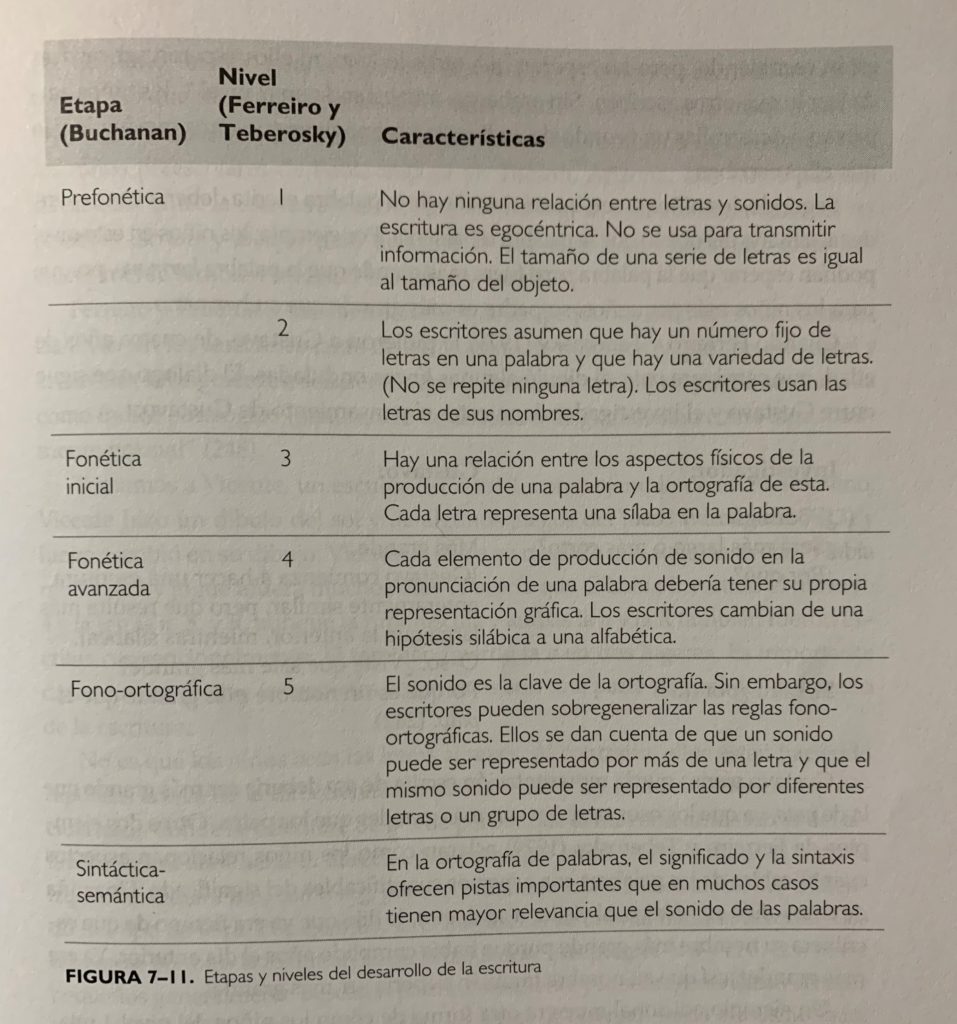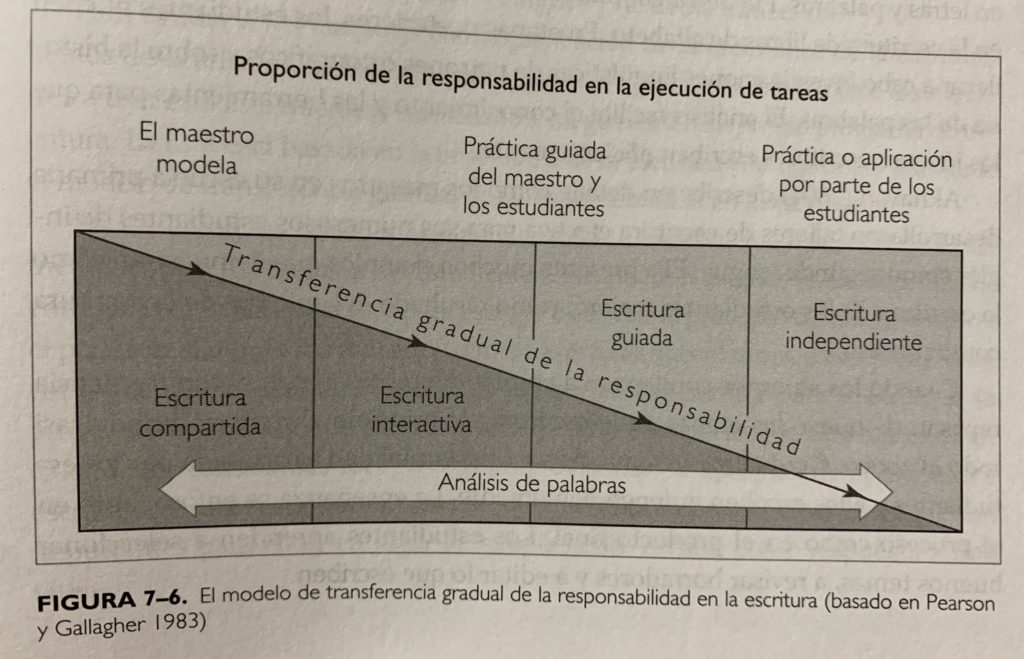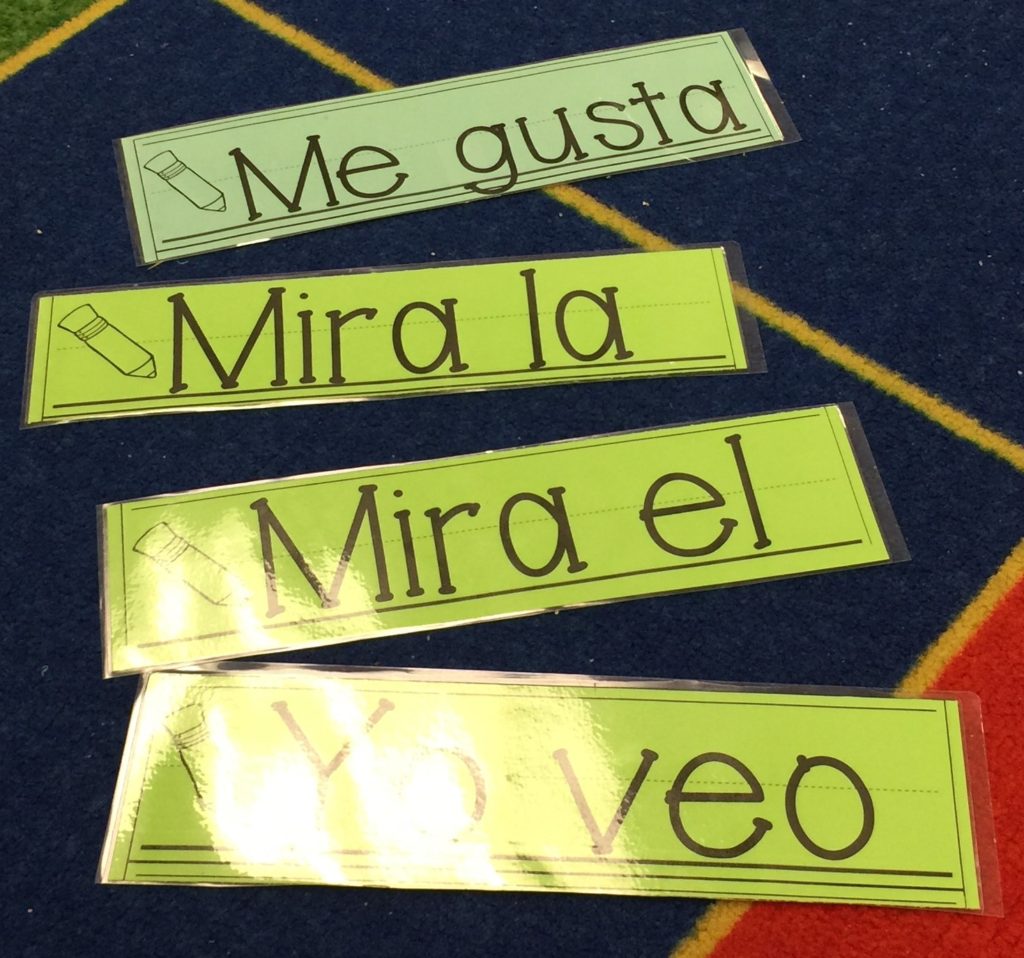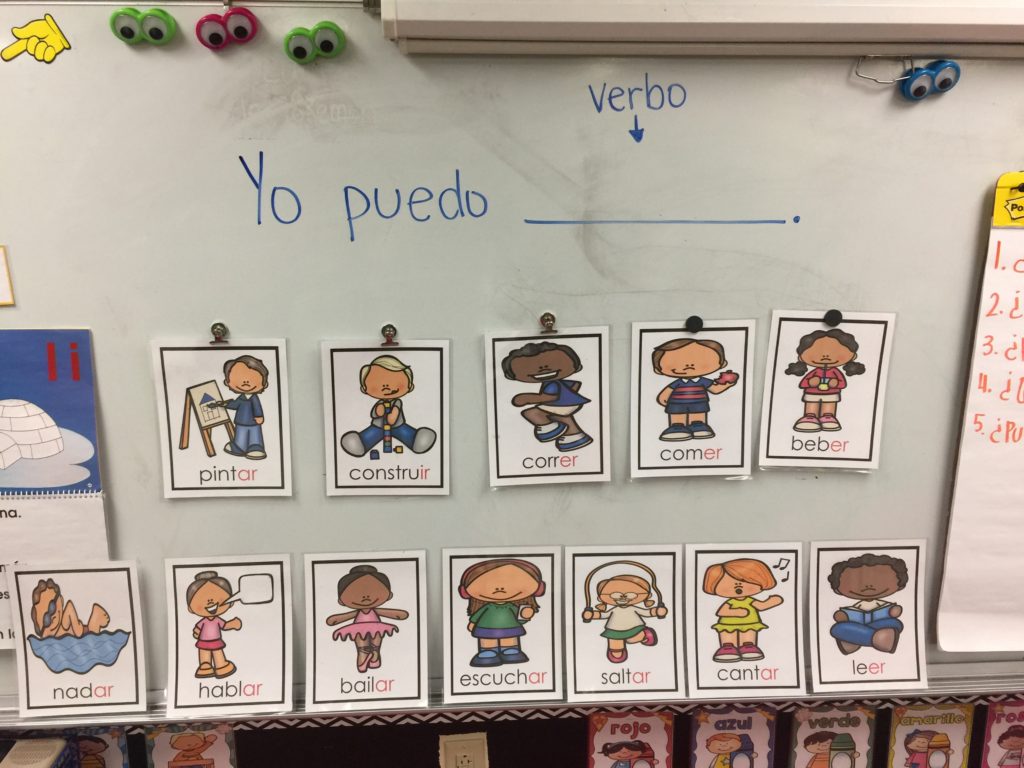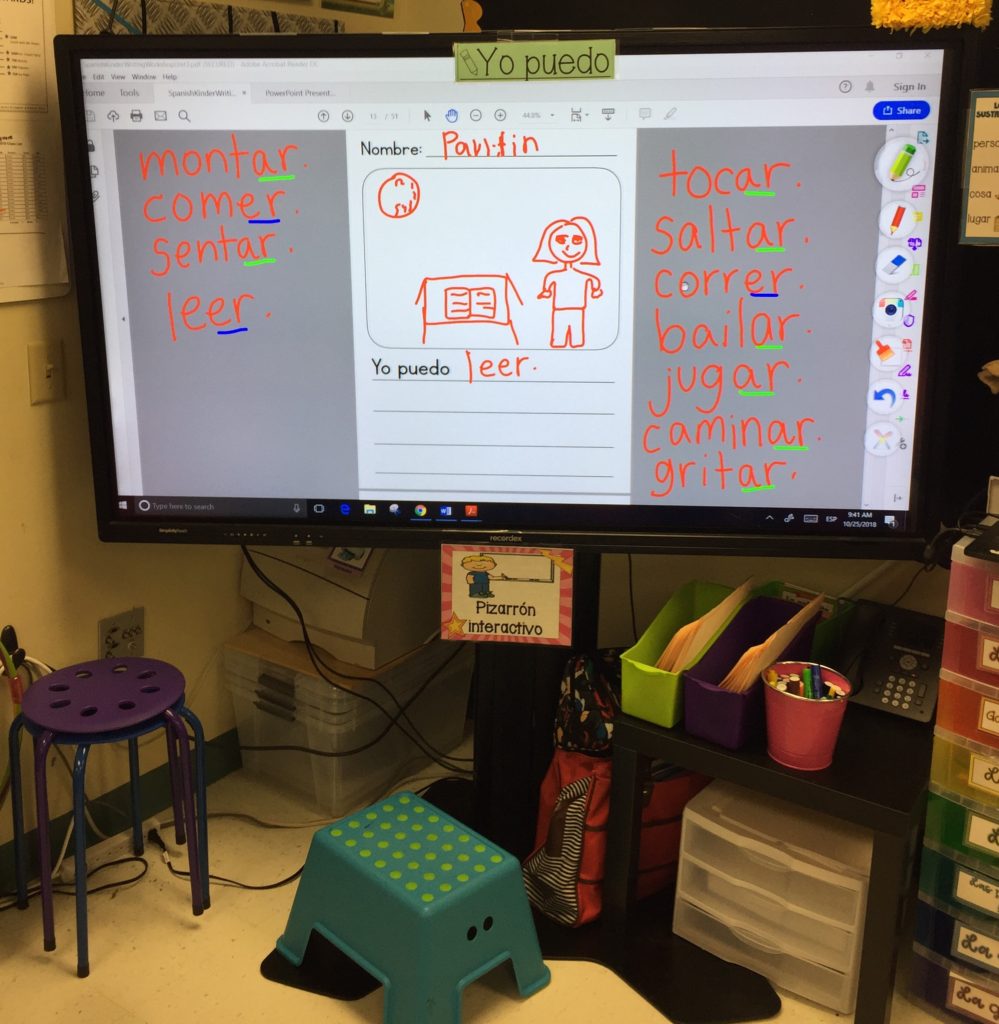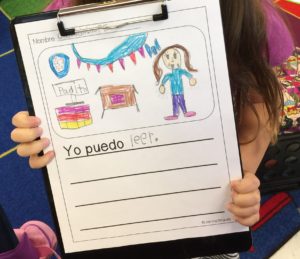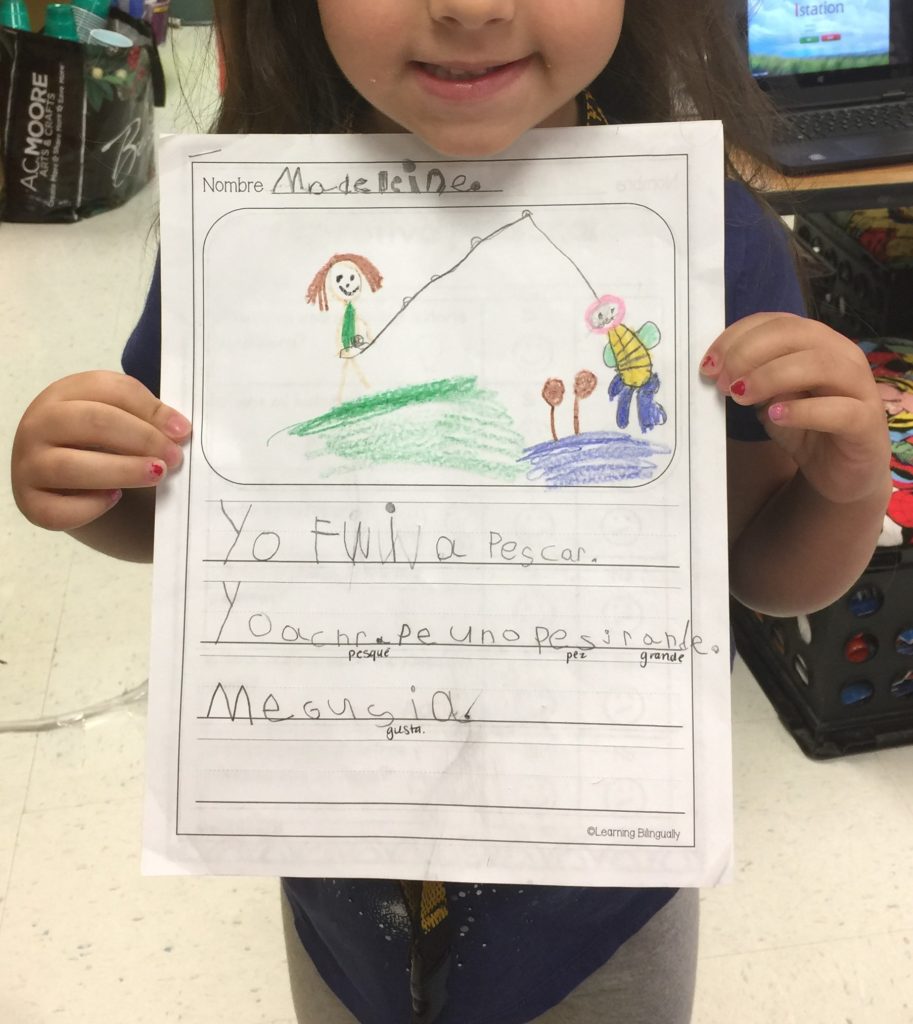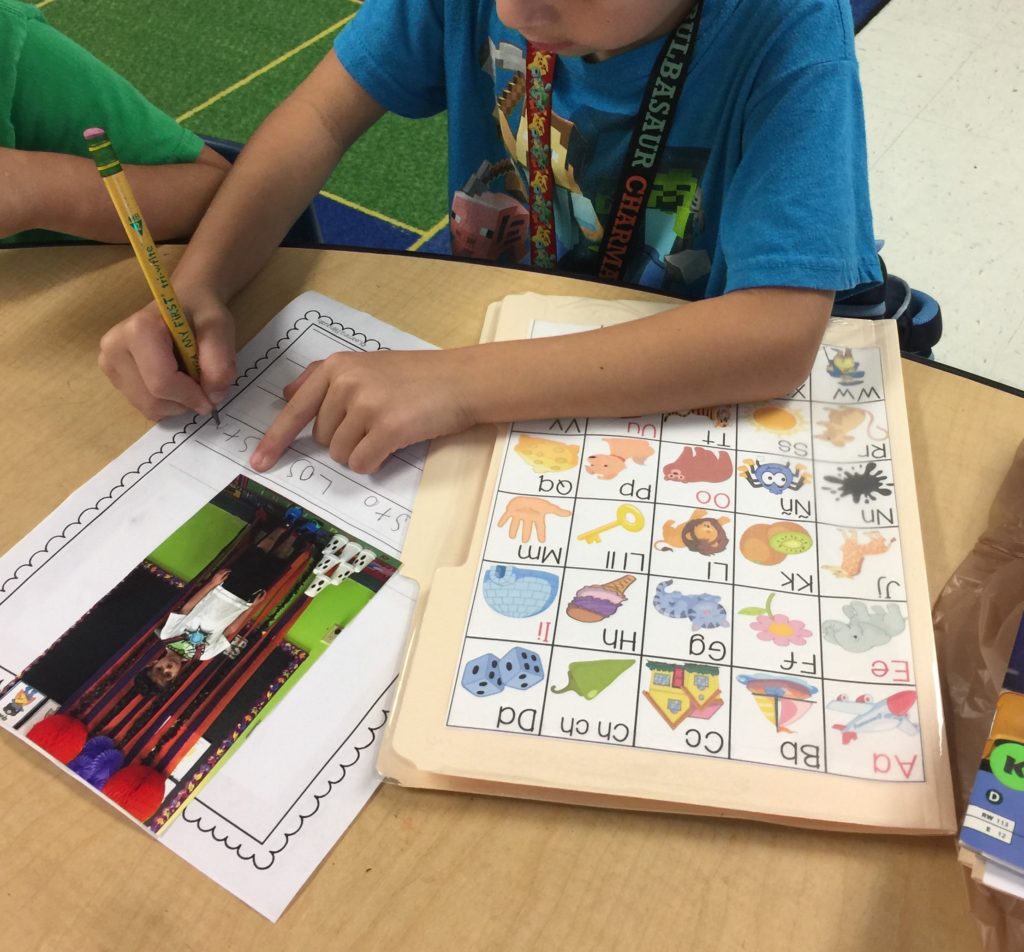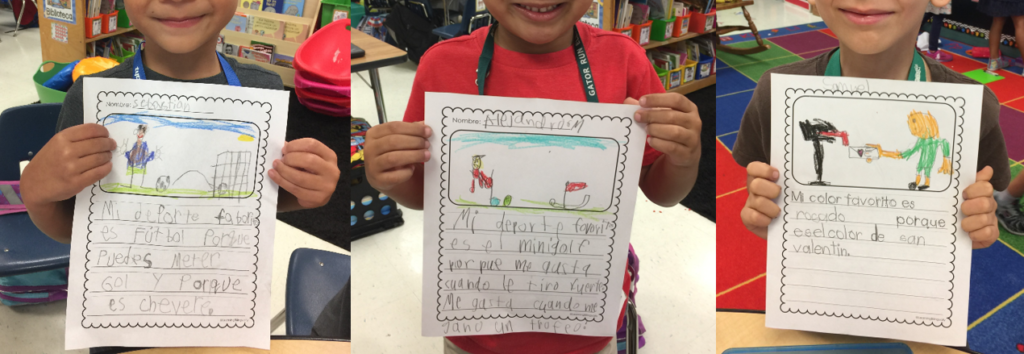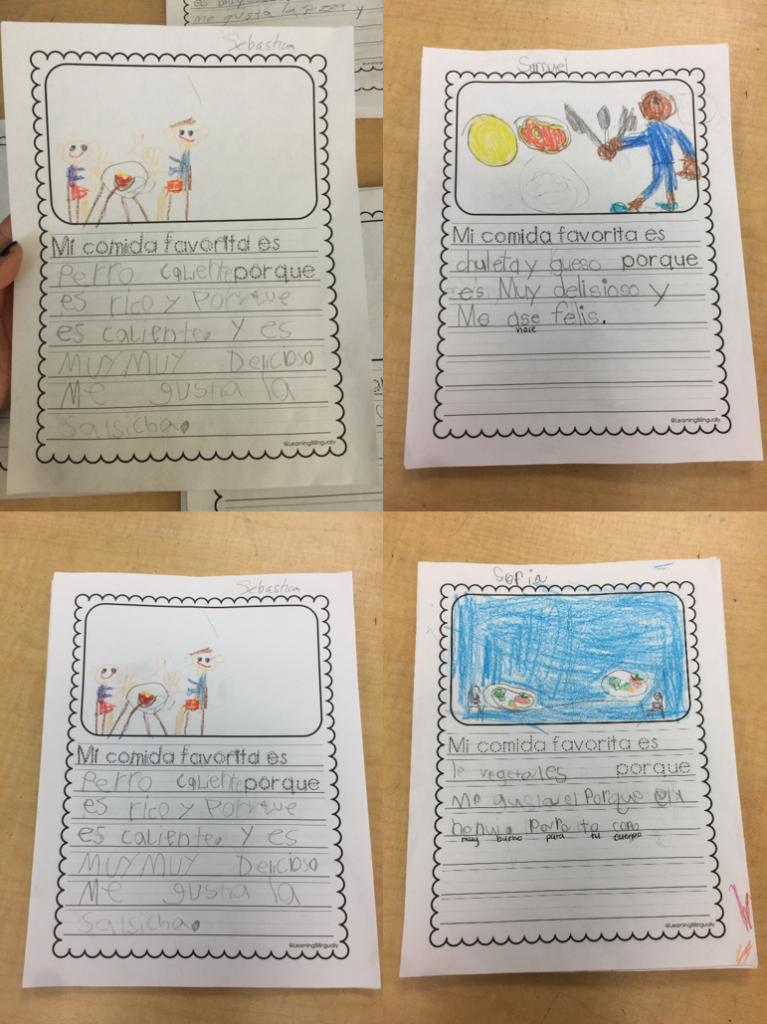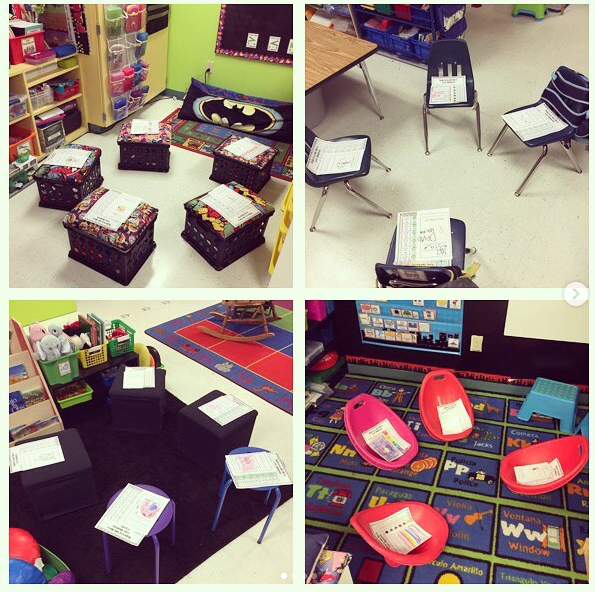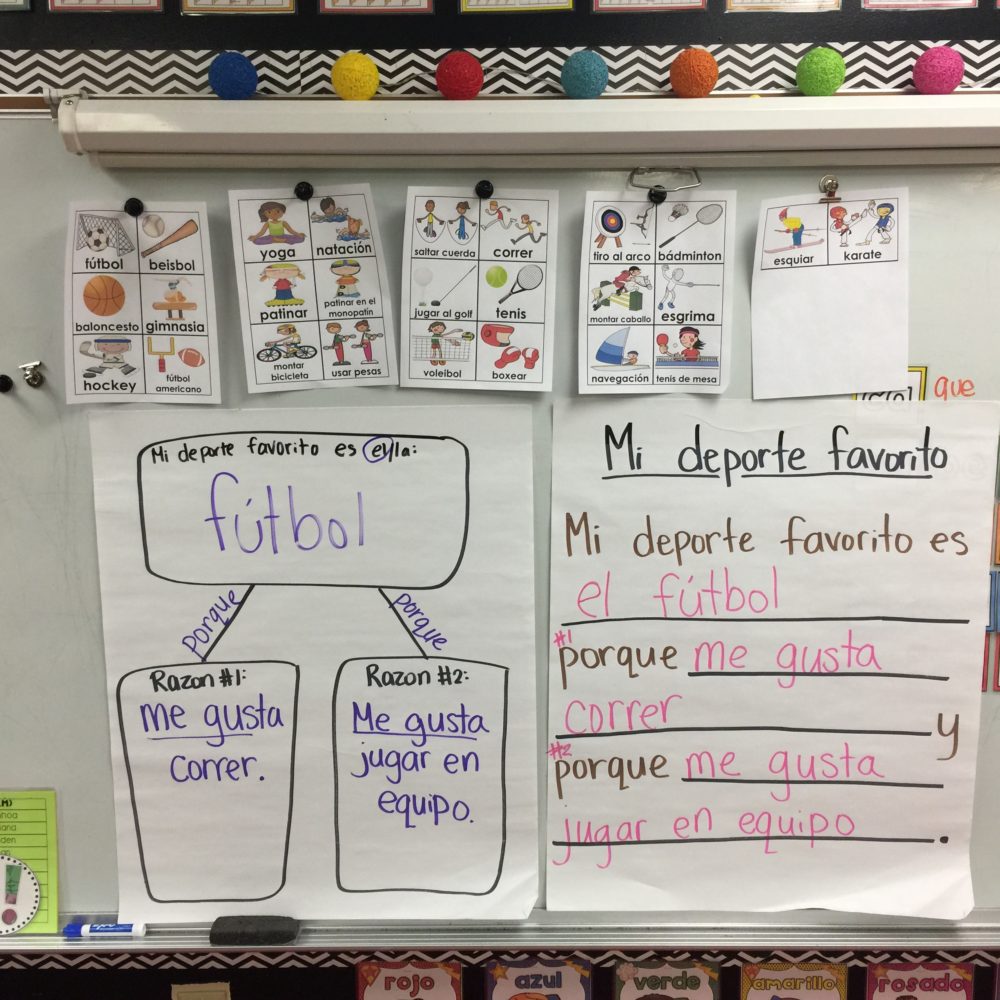
Giving our students time to write in the classroom and practice the writing process and their grade-level writing skills is extremely crucial in all classrooms. In Dual Language classrooms, students need to be given explicit time to practice their writing in both languages. Before looking at your year-long plans and figuring out how to teach writing in Spanish, it’s important to know your main writing grade-level standards and be aware of the writing that students were expected to do the year before and will have to do the following school year. Of course, to better gauge where all your students are, you can give students a beginning, middle and end of year writing assessment to measure their levels and progress.
In the early grades, we are working on building student’s confidence in their writing by developing a strong foundation with the fundamental skills necessary to write. First, we must have knowledge of the steps of the writing process and what they each entail if we are going to be teaching our students to write. There are 5 main stages/etapas de la escritura – prefonetica, fonética inicial, fonética avanzada, fono-ortográfica y sintáctica-semántica. These stages are on a continuum so our goal is to analyze where each child is entering our classroom and the progress they make along the continuum.
We also need to be aware of “el modelo de transferencia gradual de la responsabilidad en la escritura” (Freeman & Freeman, 2009). In this framework, the teacher models, students engage in guided practice and finally students engage in independent practice or application of the skills. Within those three steps, the students engage in four main types of writing – escritura compartida, escritura interactiva, escritura guiada and escritura independiente. Our writing with our young students should include all these parts, because it allows the students to feel comfortable and gather ideas and tools before getting to their independent writing.
In terms of engaging in the four types of writing, during “escritura compartida” or shared writing, you’d have your chart paper and you would model the writing but also including your students input. En esta etapa los estudiantes contribuyen con ideas pero los maestros son los que hacen toda la escritura. The second stage, escritura interactive or interactive writing, is similar to the first, but students start to contribute more to the actual writing of the piece. Esto incluye los estudiantes agregando puntuación o agregando información sobre el tópico. This type of writing also occurs frequently during your Morning Message from your Morning Meeting time. The third stage, escritura guiada or guided writing, is similar to guided reading. Students take on the responsibility of writing, but the teacher is there to support and guide the students. En esta etapa los maestros tambien pueden dar mini-lecciones sobre aspectos específicos de la escritura que sienten que sus estudiantes necesitan un poco más de orientación. Finally, the final stage, escritura independiente or independent writing, is where students get the opportunity to develop their writing themselves, taking in on all the modeling and strategies and guidance from the teacher into their own writing pieces.
So, for our young learners to develop their biliteracy, there are several types of units and learning we need to provide them. When I taught Kindergarten Dual Language, after having students become familiarized with writing tools, we would begin with writing with pictures. We would ask our students to respond to reading using pictures and if they could, labeling those pictures by sounding out words. Of course, in Spanish, I continuously stressed the idea of sounding out the syllables, which went along with our syllabic learning throughout each day.
From there we would move towards pattern writing or predictable writing. This is where we introduce students to important sentence frames and stems and students begin writing sentences using those frames. Some of the sentence stems that I utilized in kindergarten were, “Me gusta, Yo veo, Mira la/Mira el, Yo quiero, Vamos a/Vamos al,” and more. This helps students work on their writing but in a way that provides structure for them and isn’t very scary.
As Dual Language educators, we want to lower that Affective Filter, so we would not only model with the sentence stems but I would have students share out loud what they were thinking of writing and then move into their independent writing time. So students really got lots of idea for their own writing and of course I would have a lot of visuals that would also help my students find that vocabulary they needed to write independently.
Next, we would move more towards narrative writing, where first we would work on generating and compiling ideas for writing by using various graphic organizers in our writer’s notebooks. For example, having students draw a big corazón (a big heart) on the page and inside draw and/or label things that they love and are interested about. From there, students get to work on creating pieces where they share mini-stories about themselves and their lives.
Again, this unit allows students to make connections to themselves. Something we would do in Kindergarten and we would put in our students’ memory books was “Picture Writing”, we would take a lot of photos throughout the year and have our students write at least 2 times per month – once in English and once in Spanish – based on a picture they chose. This was a form of personal narrative writing that students did throughout the year.
After a narrative writing unit, you could move on to an opinion writing unit, since in these units, students are still using their own voice and ideas and preferences and it is a natural continuation of narrative writing. Now, students will be engaging in writing where they share their opinion and 1-2 reasons as to why that is their opinion. That “why” part is really important because students are learning the power of substantiating their claims even if on a very primary level at this point.
Finally, students would move onto informative writing where they will get a chance to learn more information on a topic and write about those facts they’ve gathered. This unit would include having students searching through books and age appropriate websites to gather information and facts on planning sheets and then transferring that into writing pages. Some great websites to gather information safely for children online and in Spanish are:
- http://bunis.org/
- https://www.kiddle.co/
- https://www.google.es/
- https://pebblego.com/ (this website has both English and Spanish content but you do need a subscription for the website)
What is crucial is that during the teaching of every single writing unit, the teacher is being explicit, purposeful and providing scaffolding and tools that really allow all students to access the material and the concepts. During every writing lesson, the teacher is modeling, using graphic organizers, providing those graphic organizers to the students, having portable word walls or dictionaries available or anything that will better help students with the vocabulary and information needed to successfully understand the prompt and lesson concept and activity.
At the end of each writing unit, we would hold a writing celebration where students would get to share 1-2 pieces of their writing with their peers in small groups. The students would get a chance to celebrate their progress, while also still learning from each other and the types of writing their classmates had done. Of course, we’d have a nice snack and celebratory decorations to really make sure it felt like the special event that it was!
Some strategies that we are crucial for the writing time with our young learners includes: explicit modeling, utilizing sentence stems/frames and collaborative pairings and groupings for students to work together. All of these tools are adaptable to a virtual environment – teachers can still model using prerecorded lessons or live mini-lessons, sharing sentence frames with a screen share or uploading them or attaching them to an assignment and having students in smaller breakout groups working on their writing together as the teacher moves from group to group checking in on each pairing or team.
Resources from my Store (Recursos de mi tienda):
- Writing Assessments in Spanish: https://tinyurl.com/yclktxeg
- Writing Process Posters in Spanish: https://tinyurl.com/y9ajoz6q
- Writing Posters for Beginning Writers in Spanish: https://tinyurl.com/y8dak74z
- Writing Checklist in Spanish: https://tinyurl.com/y7tllcvn
- Writing Papers in Spanish: https://tinyurl.com/y7wnlwvu
- Writing Papers with Sentence Stems: https://tinyurl.com/ydzcapu4
- Writing in Spanish using Sentence Stems: https://tinyurl.com/y7zkbwh7
- Writing Prompt Papers in Spanish: https://tinyurl.com/y9eptl59
- Year-Round Writing Papers in Spanish: https://tinyurl.com/y7ss4yzq
- Opinion Writing in Spanish: https://tinyurl.com/yd6g68p6
- My Favorite Things Opinion Writing for K-2nd: https://tinyurl.com/ybda7w7x
- How To Writing Pack in Spanish: https://tinyurl.com/y7ydynjg
- Writing Lists in Spanish: https://tinyurl.com/ycslw9bv
- Labeling Writing Pack in Spanish: https://tinyurl.com/y8znzamd
- Fictional Writing Papers in Spanish: https://tinyurl.com/y8ogagw6
- Alphabet Writing Pages in Spanish: https://tinyurl.com/yacpmg8j
- Spanish Portable Word Walls: https://tinyurl.com/yc76vsee
- Spanish Syllable Portable Word Walls: https://tinyurl.com/y7roe52y
- Vowel Portable Word Walls in Spanish: https://tinyurl.com/y9jwlghu
I also wanted to share the five main books that I use when preparing my writing instruction and just various resources and ideas on really building those foundational biliteracy blocks so our students are set up for success throughout writing instruction.
- “La enseñanza de la lectura y la escritura en español y en ingles en clases bilingües y de doble inmersión” by Yvonne and David Freeman
- “Early Biliteracy Development – Exploring Young Learners’ Use of Their Linguistic Resources”
- “El libro de estrategias de escritura – Una guia complete para formar escritores habiles” by Jennifer Serravallo
- “Teaching for Biliteracy: Strengthening Bridges between Languages” by Karen Beeman and Cheryl Urow
- “Biliteracy from the Start”
